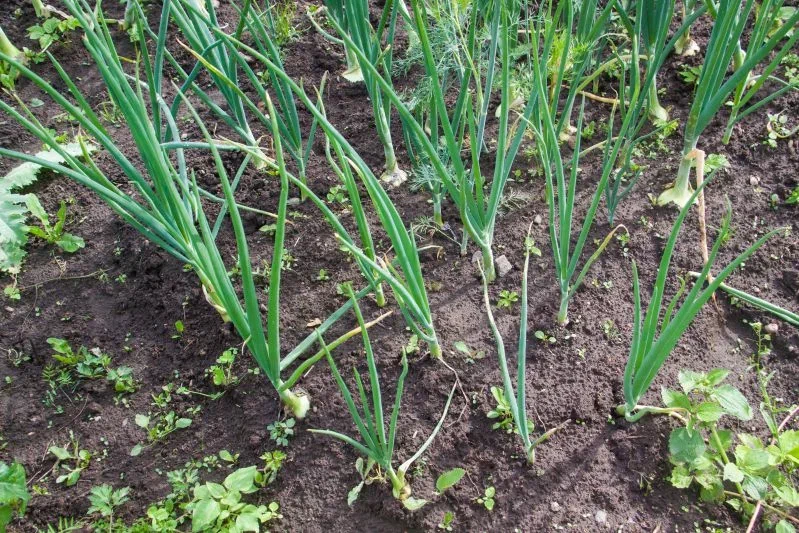How to Plant Onions in the Fall: Secrets of a Bountiful Harvest for Every Gardener
Planting onions in autumn is an excellent opportunity to get an early and rich harvest next season.
This method allows gardeners to significantly reduce the amount of spring work and enjoy fresh greenery already at the beginning of summer.
Anastasia Kovrizhnykh, an expert of the online publication "BelNovosti", a scientist, agronomist and landscape designer, told us how to act.
The correct approach to planting onions in the fall guarantees successful wintering and excellent results.
Choosing the right variety
The key factor for successful autumn planting of onions is the correct choice of variety. Frost-resistant varieties that can withstand harsh winter conditions are best suited for winter planting.

Popular varieties include Radar, Shakespeare, Sensui and Eldorado. These varieties are highly resistant to cold and grow quickly in the spring.
It is important to note that for autumn planting you should choose small bulbs rather than large bulbs. Small bulbs survive the winter better and produce stronger plants in the new season.
Soil preparation
The soil for planting onions should be light, fertile and well-drained. The ideal option is loamy or sandy loam soil with a neutral or slightly acidic pH.
Before planting, the area must be thoroughly cleared of weeds and organic fertilizers must be added.
To improve the soil structure, it is recommended to add humus or compost. On heavy clay soils, it is useful to add sand to improve drainage.
It is important to avoid fresh manure, which can lead to excessive green growth at the expense of bulb formation.
Planting dates
Choosing the right time to plant onions in the fall plays a crucial role in the success of the event.
The optimal period is considered to be the last two weeks of October or the beginning of November, depending on the region.
The main condition is that the onion has time to take root before the onset of persistent frosts, but does not begin to sprout.
The soil temperature during planting should be within 5-10°C. Such conditions promote the formation of a strong root system without premature growth of greenery, which can weaken the plants before winter.
Planting technique
The process of planting onions in autumn requires special care. The beds should be prepared in advance, forming raised ridges 10-15 cm high.
This design provides good drainage and protects plantings from getting wet in the spring.
The bulbs are planted at a depth of 3-4 cm, leaving a distance of about 10 cm between them. The row spacing is 20-25 cm wide for ease of care.
After planting, it is recommended to mulch the beds with a 2-3 cm layer of peat or humus, which will help protect the bulbs from freezing.
Caring for plantings
Autumn planting of onions does not require intensive care, but some measures are still necessary.
It is important to monitor the condition of the soil and, if a crust forms after rain or watering, carefully loosen the spaces between the rows.
In the absence of snow cover in severe frosts, it is recommended to additionally cover the beds with spruce branches or agrofibre.
In spring, as soon as the snow melts, it is necessary to apply nitrogen fertilizers to stimulate growth.
Features of spring care
With the onset of spring, caring for winter onion plantings takes on special importance.
As soon as the soil has warmed up sufficiently, the space between the rows should be loosened and weeds removed.
It is important not to allow the soil to dry out, but also to avoid overwatering, which can lead to rotting of the bulbs.
Top dressing is done 2-3 times per season, using complex mineral fertilizers. The first top dressing is done in early spring, the second - during the period of active growth of greenery, and the third - a month before harvesting.
Protection from pests and diseases
Onions planted in autumn are less susceptible to pest attacks and diseases compared to spring plantings.
However, it is important to regularly inspect plants for signs of damage.
For prevention, you can use biological protection agents or folk methods, for example, spraying with an infusion of garlic or onion peel.
